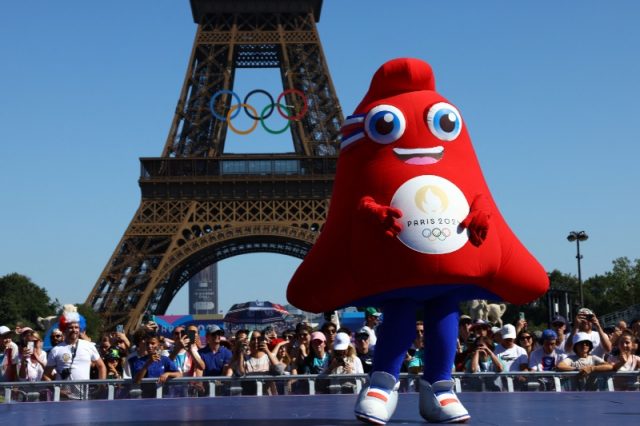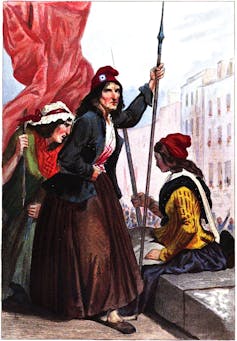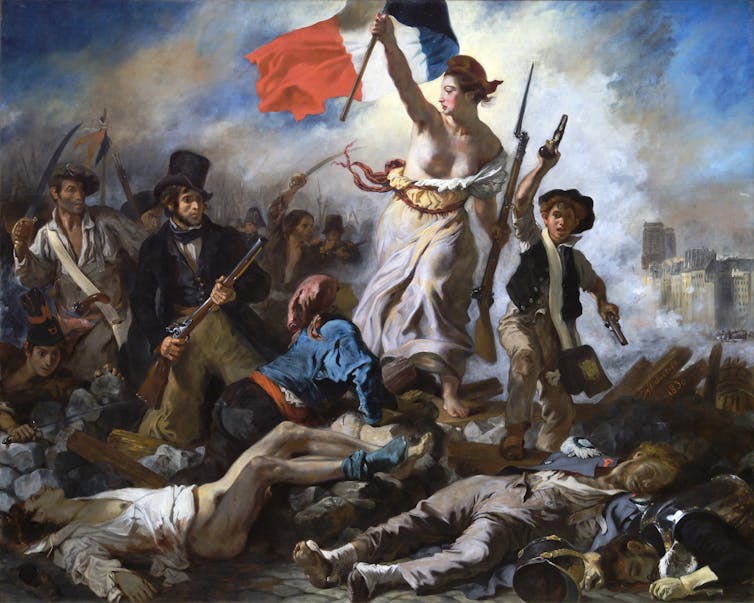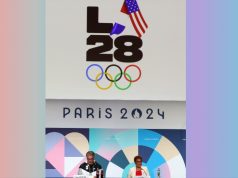
The Paris 2024 mascots have charmed and perplexed fans of the Olympic and Paralympic Games.
Mascot creators were inspired by “the famous Phrygian cap — a symbol of freedom.”
The red Olympic Phryge (pronounced FREE-juh) and Paralympic Phryge — together the Phryges — may seem innocuous. But the Phrygian symbol upon which they are based has a fraught global history that challenges the narrative of freedom and unity the Olympics, and its French hosts in particular, want to tell.
Furry Olympic friends
According to officials, mascots have been a “key part” of the Olympic experience since France hosted the Grenoble Winter Games in 1968.
Since then, “furry friends” aimed at the Games’ youngest enthusiasts have dominated the mascot category, from Waldi the dachshund (Munich 1972) to Quatchi the sasquatch (Vancouver 2010).
Occasional controversies over cultural appropriation, consumerism and mistaken memes aside, the Games’ cartoon ambassadors tend to elicit affection, providing respite from the Olympics’ endless scandals.
‘An ideal,’ not an animal
When the Paris 2024 mascots were rolled out two years ago, the Games’ president hailed the novel selection of an “ideal rather than an animal.” A marketing video introduced a throng of conical Phryges, who skateboarded their way into the internet’s affections.
But what “ideal” are the Phryges meant to represent? Students in my European history class likened the character to an anthropomorphic steak or tongue, reasonable conjectures given France’s rich culinary heritage. Cruder interpretations have ranged from the sexual to the scatological.
In fact, the Phrygian cap is a cross-cultural symbol of liberty with special resonance in France. The Olympics website notes it was worn during the construction of Notre-Dame cathedral and the Eiffel Tower, as well as during the Paris 1924 Olympics.
The symbol is especially associated with the French Revolution (1789-1804), as referenced in the Games’ vague pledge to “drive a revolution through sport.” The mascot’s enormous eyes, moreover, double as cockades, the tri-color badges that inspired the national flag in the 1790s.
Today the floppy hat appears on coins and stamps, and Marianne — the feminine embodiment of the revolutionary Republic — usually wears one. (She also features prominently in Paris 2024’s logo).
Greek and Roman origins
Liberty caps circulated throughout the ancient Mediterranean long before their appropriation in America, France and Haiti during the Age of Revolutions (1775-1848).
In the first millennium BCE, the Phrygians of central Anatolia wore pointed red hats that marked their status as foreign freemen throughout the Greek world.
In Roman iconography, meanwhile, the goddess Libertas often hoisted a tapered cap (or pileus) on her spear, and former slaves donned them to mark their liberation.
The liberty cap in America
The Phryges’ mini-biography tracks the Greco-Roman cap’s migration as far afield as Latin America. What goes unmentioned is its run as “one of the most recognizable symbols of freedom from tyranny during the American Revolution.” The empowering symbol adorned colonists’ anti-monarchical pamphlets, flags and liberty trees in 1776, and still endures in numerous official seals and works of art throughout the Capitol Building in Washington, D.C.
Yet the cap’s liberating potential, which abolitionists across the Atlantic world mined to powerful effect, was unwelcome in a republic that left the institution of chattel slavery intact. Slave-holding leaders like Jefferson Davis strove to repress the liberty cap in 19th-century American iconography.
As historian Sarah E.Bond pointed out in 2018, the most visible red hats today are donned by supporters of Donald Trump, whose politics of “isolationism and exclusion” are incompatible with how “the red cap was actually once a symbol of freedom and citizenship.”
The politicization of fashion
If the liberty cap has been “nearly forgotten in America,” the historian Yvonne Korshak notes, “it is taken for granted as an emblem of the republic in France.”
This is why the Phryge was chosen. But the cap has meant different things at different junctures in France’s tumultuous past.
During the Revolution’s moderate stage, idealistic reformers strove to replace divine-right absolutism with a constitutional monarchy and meritocratic society. Their 1789 declaration of rights was garnished with a blue Phrygian cap.
But as politics radicalized from 1792, red caps proliferated among the new republic’s working-class supporters, known as sans-culottes due to their practical trousers. According to historian Richard Wrigley, the bonnet rouge (red cap) became a “factional badge” associated with the sans-culottes’ brand of violent populism. Louis XVI was made to don one several times in the months preceding his ouster, trial and execution.

(Wikimedia Commons)
A state of emergency known as the Terror followed as newly won rights were suspended. Citizens sported cap-bedecked guillotine earrings to mark their allegiance to the cause.
The Republic was saved, at least for the moment, but the cost in terms of lives and compromised principles was immense.
After the Terror ended in 1794, Wrigley continues, bonnets rouges were “removed from sight” and “edited out of the political vocabulary,” their hue associated with “blood-drinking” and “throat-slitting.”
For a time, a tricolor cap replaced the red one. Some French embraced the Gallic cockerel — still a popular choice today — as a more neutral patriotic icon.
Republican symbols fell out of favour during the Bourbon Restoration (1814-30). But the revolutionaries of 1830 resurrected the red cap. This time, it denoted the more inclusive cross-class alliance celebrated in Eugène Delacroix’s iconic painting, “Liberty Leading the People.”

(Wikipedia)
Whose rights?
Today, the cap pervades French public spaces, making it an apt rallying symbol for this year’s Olympics.
But understanding the country’s fraught politics — including the fissures exposed in last month’s elections — requires an appreciation for the icon’s shifting and selective uses.
Paris 2024 chose the cap for its liberating connotations. It is thus ironic that its hosts invoked the Republic’s robust brand of secularism to ban a different type of headgear when it barred French Muslim women from wearing International Olympic Committee-approved headscarves during competition.
Dress, then, continues to expose republican contradictions, in this case between France’s commitment to freedom of expression and religious conscience and its efforts to discipline its citizens. What would Marianne say?![]()
Kelly Summers, Assistant Professor of History, Department of Humanities, MacEwan University. This article is republished from The Conversation under a Creative Commons license. Read the original article.









